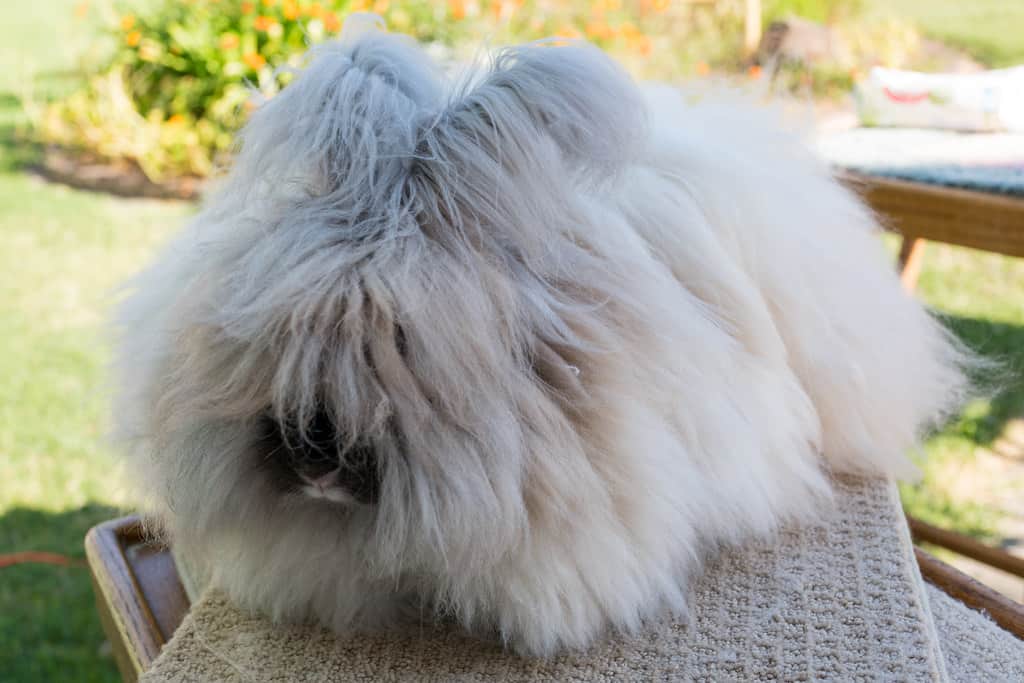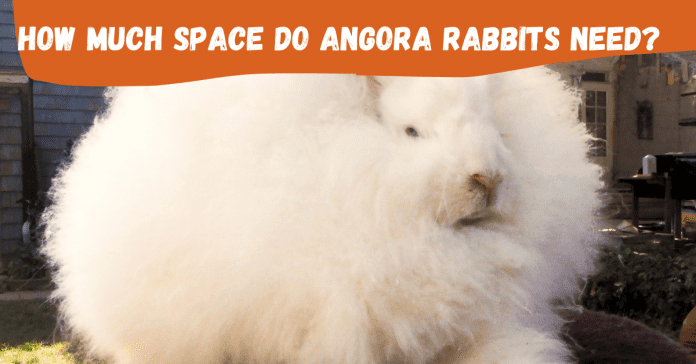Like every other rabbit, Angora rabbits require sufficient space for movement. How much space do Angora rabbits need? This is a common question. However, there is more stress given to these rabbits as they produce a material called Angora wool that is usually a key raw material in fiber arts.
It is the soft wool that keeps them fit for shearing at a later stage. While Angoras demand significant work from their owners, the results are satisfactory if profit is the goal. Let us look at the exact space needed by Angora rabbits along with the method to set up their spaces productively.
How much space do Angora rabbits need?
Angora rabbits are known for their huge sizes where wool constitutes the maximum size. The minimum space required by Angora rabbits will be a height of 5 ft with a dedicated area for movement amounting to 10 square feet. As they grow, they need more space based on activity levels.
Angora rabbits are particularly active creatures and love to explore their surroundings, so they require a good deal of space in which to run and play. If you’re keeping your angora rabbit indoors, be sure to provide a large enough cage or pen with plenty of toys and branches for climbing.
Outdoors, an angora rabbit needs at least a large fenced-in area in which to roam free. The fencing should be at least five feet high, as angora rabbits are expert climbers and can easily escape from low-lying fences. There should also be shade in the enclosure, as angora rabbits are very sensitive to heat.
Do angora rabbits need to be in pairs?
Angora rabbits are social creatures looking for a companion. While some of them are content living solely, some lookout for a pair and get depressed otherwise. Factors like space, cost, and needs should be considered.
I have had a neighbor of mine who raised angora rabbits for more than 7 years. During the first 2 years, they had 2 rabbits and one of them passed away in the second year. They adopted one more so the rabbit has a companion. After the loss of the second rabbit, they retained with only one of them and the rabbit was content.
Many people believe that angora rabbits need to be in pairs, but this is not actually true. While it is preferable for them to have a companion, it is not absolutely necessary.
If you are unable to provide your angora rabbit with a companion, there are a few things you can do to keep them happy and healthy.
- One of the most important things you can do for an angora rabbit is to make sure they have plenty of room in their cage. If the space is cramped, your rabbit may become depressed and stop eating, or begin to engage in unwanted behaviors such as chewing or biting themselves. If you can’t let them roam free in your house, try to set up an area where they can run around and explore.
- A good diet is also important for angora rabbits. Make sure they have plenty of hay, fresh vegetables, and water. If they are not getting the nutrients they need, they may become malnourished and develop health problems.
After reviewing multiple breeds of rabbits, we have an exclusive article answering do rabbits need to be in pairs.
Can angora rabbits live indoors?
Angora rabbits are perfect indoor pets since they cannot withstand pollution, excessive sunlight, wire cages outdoors, and are sensitive to sugar.

Perhaps, angoras are extremely soft and fragile creatures overloaded with soft wool. They need to live indoors as they demand specific care. In the last few years of seeing my neighbor raise angora rabbits, I can easily say a few reasons to topple my claim.
- External pollution is prevented.
Due to their hairy structures, when they are left outdoors, the soft wool becomes more polluted and needs more maintenance. As they are left indoors, they are safe from external pollution and daily grooming takes less than 10 minutes.
- Excessive sunlight is avoided.
Excessive sunlight is a killer for angoras as their wool coat can turn fatal. Some angoras also develop epilepsy as they are prone to sunlight. While staying indoors, this can be addressed with shadier places to live in.
- Sugar levels are moderated.
When angoras are left outside, they tend to eat many fruits and leaves that can possibly cause sugar issues and increase carbohydrate levels. This can choke their digestive systems. Having them indoors helps in preventing this issue.
Note. Most importantly, angoras love staying indoors and interacting with humans.
Are angora rabbits hard to take care of?
Like every other breed, angora rabbits are easy to take care of with the only condition of regular grooming to maintain a neat and clean coat.
They are easy to take care of since they tend to self-clean at the basic level and are immune. From setting up the space for them to taking care of them, one does not have to worry about how much space do angora rabbits need since they take a small space.
How often do you brush angora rabbits?
The rule of thumb is to brush angora rabbits twice a week so it lets you closely monitor matt and any other issues in the fur. If you have more than one angora, grooming at least once a week is mandatory.
Note. If you are new to grooming or brushing your angoras, you should always go with a professional groomer and learn the skill before you practice.
How big does an angora rabbit get?
Angora rabbits stop growing at the age of 1.5 years when they weigh at least 15lbs. This is the time they attain a perfect shape.
If you have multiple breeds at home, here is an exclusive article to read – When does a rabbit stop growing?
Conclusion
Perhaps, raising angoras is fun as their appearances are attractive. Unlike other breeds, they need extra attention and grooming to maintain the health of the wool. If you know how much space do angora rabbits need, the biggest issue faced by angoras is about to get solved.


